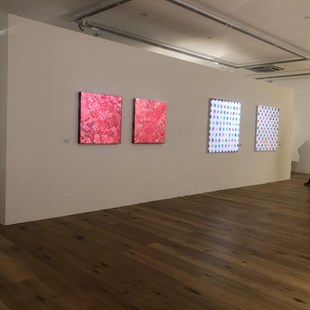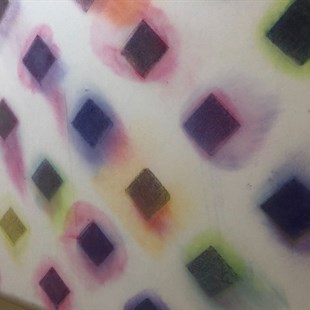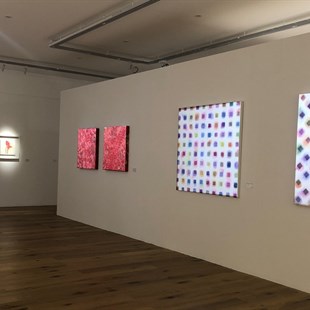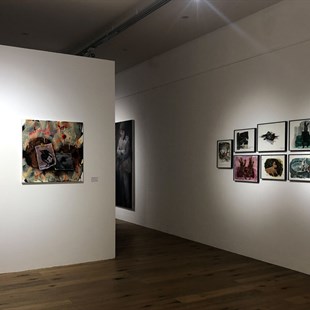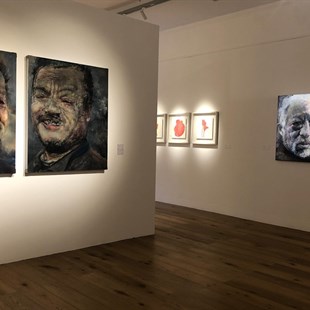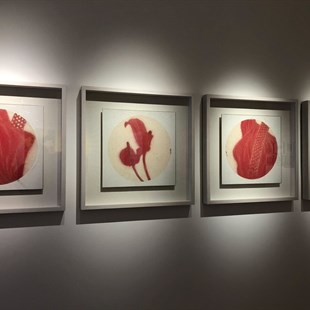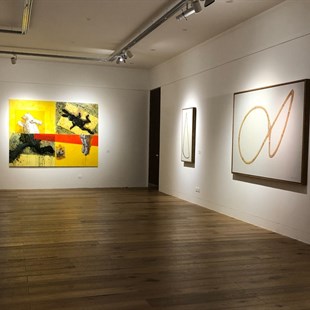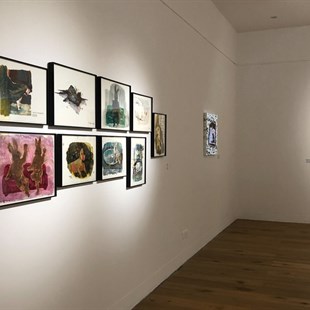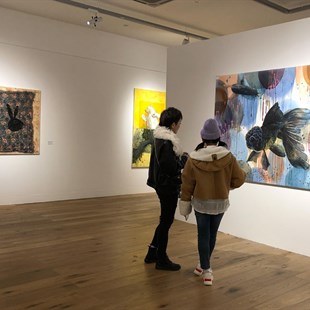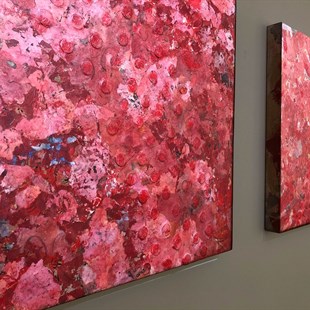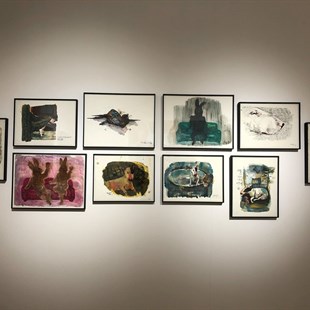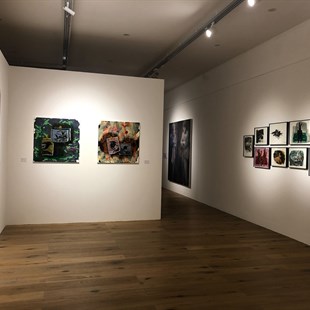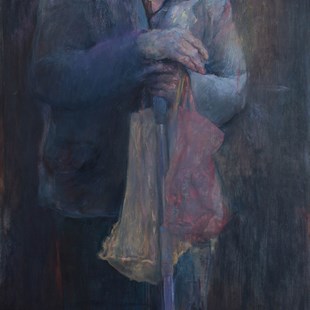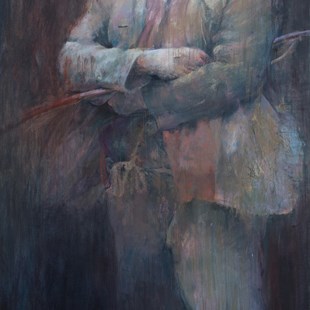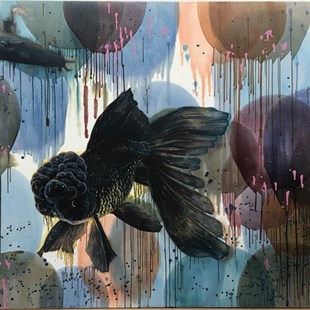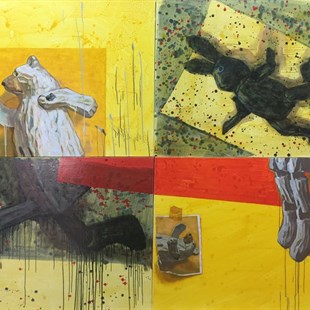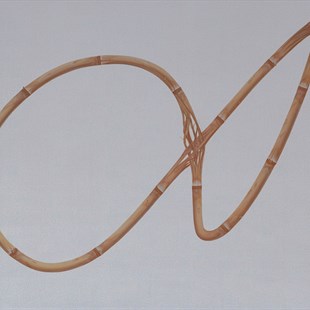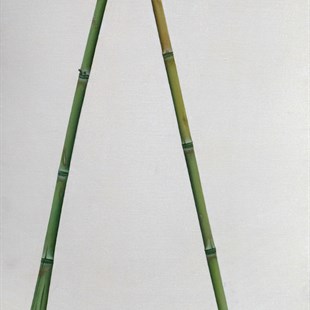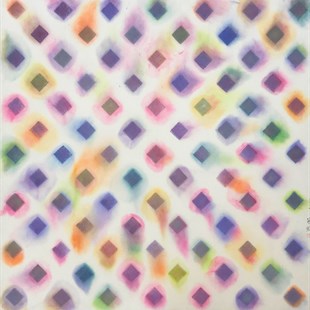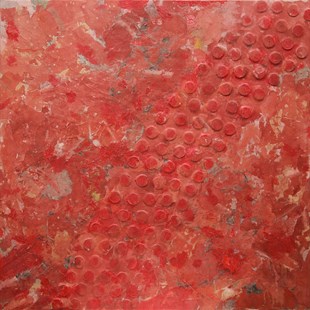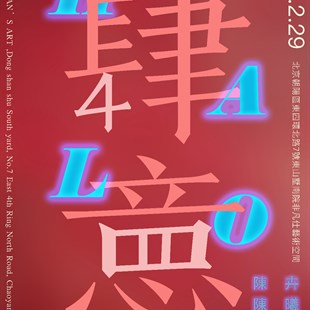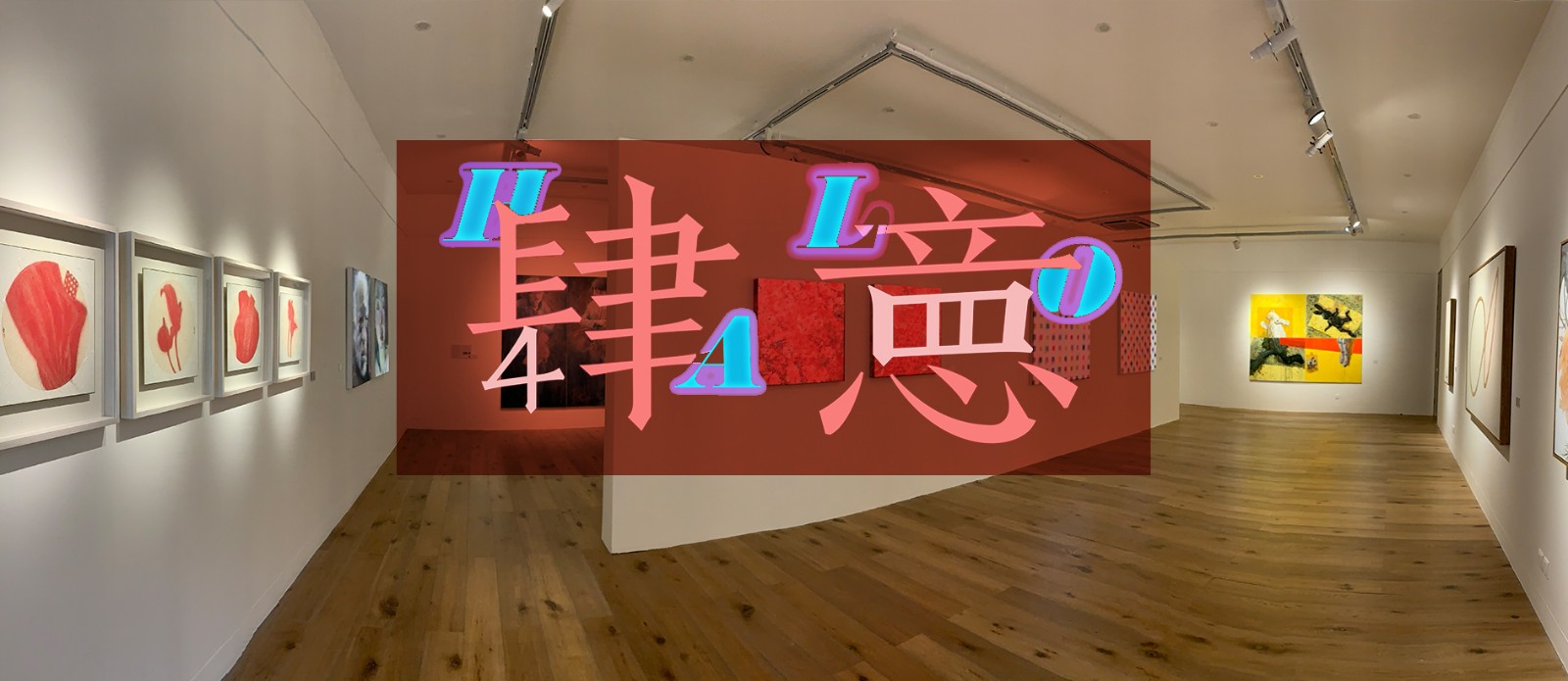
During the first weekend of 2020, four female artists Chen Hui, Chen Xi, Zhang Yanzi, and Wu Didi jointly launched a group show in FEEFAN’S ART. “肆” is the numeral four from original Chinese characters, as a verb it means being unrestrained. These four artists present four levels of artistic conception, showcasing the free and unrestrained expressions of contemporary female artists.
The English title for the exhibition is “HALO” which means luminous body. This is how Gao Difei, the founder of FEEFAN’S ART feels about the four artists. Although they have very different styles, they all have a form of confrontation by women within the new era: independent thinking, instead of being kitschy, no femininity, working and living by their own will in the hustle and bustle of the world. During the conversation between the four artists, Chen Hui thought of a song “HALO” by Beyoncé Giselle Knowles. She said, “the aura of art is that we ourselves have pushed down all the fetters we have built. We must be the angels with our own halo! "
I
“I have a magic to make human”
“I can be sensitive to the subtle, unified and contradictory relationship between the body and spirit. I think those are the clues that I can ‘detect’.”
Chen Hui loved painting ever since she was a child, but she missed the opportunity in gaining a place at the Central Academy of Fine Arts. She finally entered the Central Academy of Drama to study Character Modeling and Design. Chen Hui therefore gained a more subtle perspective when observing people. After graduation, Chen Hui was engaged in teaching at the Communication University of China and has always maintained her interest in painting. Such a situation continued until 2005 when she was admitted to the Chinese Academy of Fine Arts. When preparing her work for the graduate course, she extracted experience from her past painting experience and created the portrait “Little Q”, which was unexpectedly praised by her supervisor. After that, she created a series of weirdly dressed characters, made absurd satire and humorous storytelling on social phenomena and successively held solo exhibitions.
In 2014, Chen Hui’s creations changed. The opportunity came from shock caused by her mother’s illness. She developed a new series of works from her mother’s face. She frankly said: “ ‘face’ has begun to have a deeper meaning in my heart, thus the theme of focusing on faces slowly came into being.”
Chen Hui likes to draw people, but only acquaintances. She believes that using this method can grasp the spirit of the subject, because “the most important thing for portraiture is the soul, not the external form itself.” In the exhibition hall at FEEFAN’S ART, “Lao Li” and “Self-Portrait” are arranged side by side, recording the face of Li Xianting and Chen Hui with eyes staring at the camera and closed respectively. Here the face is materialized into the “you” as a viewer. Chen Hui regards it as the third space extending between the viewer and the viewed one. It can also be understood as the soul or spirit, which is invisible. With the existence of nothingness, viewers need to communicate and interact with it in order to gain their own experience. This is what Chen Hui thinks of herself: “I think I have a magic power. Like a witch, I am creating a person. When I draw, to a certain degree, I feel that I can call his soul out.”
Han Shan and Shi De were originally hermits in the ancient Tang Dynasty. In the Song Dynasty, they were regarded as the incarnation of Manjushri (Han Shan) and Samantabhadra (Shi De). At this time, they also began to be depicted by Buddhist monks and literati painters. Through her research and understanding, Chen Hui also drew a set of “Meeting Han Shan and Shi De”. In her painting, two contemporary figures dressed in rags were used to express her own artistic language, this is exactly Chen Hui’s “magic to make human”.
II
“Free Runaway Rabbit”
If Chen Hui is concerned about metaphysical existence, then Chen Xi’s work pulls us back to social reality. In 2018, “Rabbit on the Run: Chen Xi’s New Works” were held at the Minsheng Art Museum, the artist showed her “Rabbit” series since 2013. In the large exhibition space, the individual emotions are connected with current realities by a black rabbit, which does not only summarize the many issues involved in Chen Xi’s previous artistic practices, but they also explain the confusion and resistance she has produced.
Chen Xi has always paid close attention to the social realities around her. At first, she used expressionist methods to depict the social life scenes of restaurants, KTV, shopping malls, markets, and bathhouses that have undergone dramatic changes since the 1990s. After entering the new century, she began to update her creative methods and expressed her ideas in a conceptual way. After the series of “Queen’s New Outfits”, she later cut into the grand historical landscape of the television era through painting. In Chen Xi’s monograph published in 2001, her art world was named as “Free Runaway”, while summarizing her past artistic creation, she also revealed a “free” state in her creations.
An art creation is never groundless. Artists need to find a balance between the contradiction between the individual and reality. Chen Xi was trapped and kept asking, eventually her answer was: “As an individual, we are incapable of reality. What I worry about is not the problem of an individual or a group of people, but I have doubt about the entire human spirit and behavior today.” Therefore, Chen Xi fled again freely, this time she fled to the moment of globalization, adopting an allegorical system, she read John Updike’s novels on Rabbit and inspired by the performance art work of Joseph Beuys, “How to Explain Pictures to a Dead Hare”(1965), the use of rabbits is a metaphor for the many crises facing human life today.
We cannot return to the live performance of the Minsheng Art Museum in 2018 to experience Chen Xi ’s “Black Rabbit”, but this does not prevent us from rethinking the artist’s “free runaway” in a limited number of pieces such as “Crisis 02”, “Games: Black Rabbit and White Bear”, “Lace Rabbit Series” and other works shown at FEEFAN’S ART.
III
“The hormones I see are colorful”
Two years ago, also in this exhibition hall, Zhang Yanzi’s solo exhibition “The Ecstasy” was presented here. The artist created several works on “joys” and “pain”, creating a hallucination where the audience was temporarily lost. This year, again in this space, we can see the artist proceeding from the topic of “hormones”, continuing her comprehension and expression of life, body and the world that she has been exploring. “Art is a way of thinking, and we find ourselves in this way of thinking,” Zhang said.
At the entrance of the exhibition hall, Zhang Yanzi’s two series of new works “Impetus” and “Hormones” in 2019 were displayed with strong colors and forms. Hormones, (from Greek Polytonic|ὁρμή impetus) are chemicals released by cells that affect cells in other parts of the body. They are important substances produced by the stimulation of the human endocrine system, though they do not directly participate in the body’s material or energy conversion, but they regulate the body’s metabolism and affect the physiological activity of the human body. The study of medical hormones or internal secretion, can treat human diseases.
Zhang Yanzi believes: “People recognize that they are finite, but they can stretch to infinity and experience mysteries. Hormone, as a substance that is embedded in life, is difficult to be perceived when it is in our bodies. Only when it passes from the body, will people find its presence.” This is a metaphor for life, but also a memory of youth.
In the work “Red Pistils”, the artist chose the red calla lily as her observation object. Like a scientist observes with a microscope, she zooms in to observe the details through macro shooting. She said: “These pistils are spirally arranged one by one like passwords, they are a bit like the goosebumps that are raised on our skin and they inspire us to explore a microscopic world. Everything is full of mysteries, and they show their existence through these mysteries.” We can understand that everything uses its own password to point to the mysteries in the world that the artist wants to explore, the spiritual world.
Everything will eventually fade way, this heavy topic has been hidden in Zhang Yanzi’s creation. However, everything that has passed has left gorgeous traces in Zhang Yanzi’s works. From capsules, remedy, prescriptions to hormones, Zhang Yanzi’s art world is like her interpretation of the work: “The hormones I see are colorful.”
IV
“It’s better to eat without meat than live without bamboo”
This is an old saying that “bamboo can be burned without destroying its integrity”. Since ancient times, “bamboo”, which is a symbol of integrity that has been loved and praised by the literati and its spirit has also attracted Wu Didi. She brought new works of “Bamboo” series including “∞” and “Tilt Back 13.3°”. After the branches or leaves were removed by the broken or curved bamboo stems, they were displayed on the canvas in a geometric shape, creating a form of beauty while highlighting a spiritual existence.
Although the oil painting language is used, Wu Didi’s painting of bamboo is quite delicate and textured. For a “bamboo” painting, she has to lay out the background color forty or fifty times on the screen to make the picture similar to the final textural experience of porcelain or rice paper, she regards it as a manifestation of her personal consciousness. After painting over and over again, the picture itself has grown. When the bamboo is drawn, the branches are closed after leaves seem to be removed. Occasionally, there are one or two small insects, or stubs of bamboo branches and the detailed traces on the bamboo stem form a surrealistic picture.
As the old saying goes, “the potential is like breaking bamboo.” “Breaking bamboo" is another important intention of Wu Didi’s “Bamboo” painting. Critic Wang Min’an noticed the rupture in Wu Didi’s “Bamboo” painting. As a smooth line constitutes a close and smooth pattern, then the twisted crack is the interruption, pause, stuttering, and frustration of the smooth line. In his opinion, Wu Didi’s bamboo stripped away from the mythological meaning inherent in Chinese culture (painting) as China has a long tradition of painting with bamboo as the theme and her creations became a game of visibility (No one has painted bamboo as realistically as Wu Didi, nor has she painted bamboo so unrealistically as she did). It falls from the myth of meaning to the game of form, it transforms from some mysterious metaphorical aesthetics to a pleasant pattern structure, it shifts from endless eternal vitality to stuttering, moaning and breathing.
Wu Didi believes that “it’s better to eat without meat than live without bamboo.” Her “bamboo” paintings are beyond the material quality of bamboo, in the space provided by FEEFAN’S ART, developing into a more sublime poetic pursuit.
“A world in a wild flower, and a bodhi in a leaf”. The four spiritual images that four active female artists bring to us in the “HALO” with each form a microcosm by their art.
Text and Photo by Yangzhonghui, edited and translated by Sue/CAFA ART INFO


